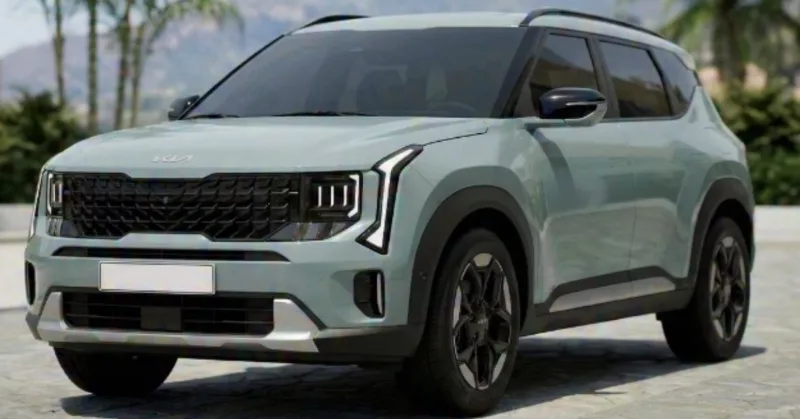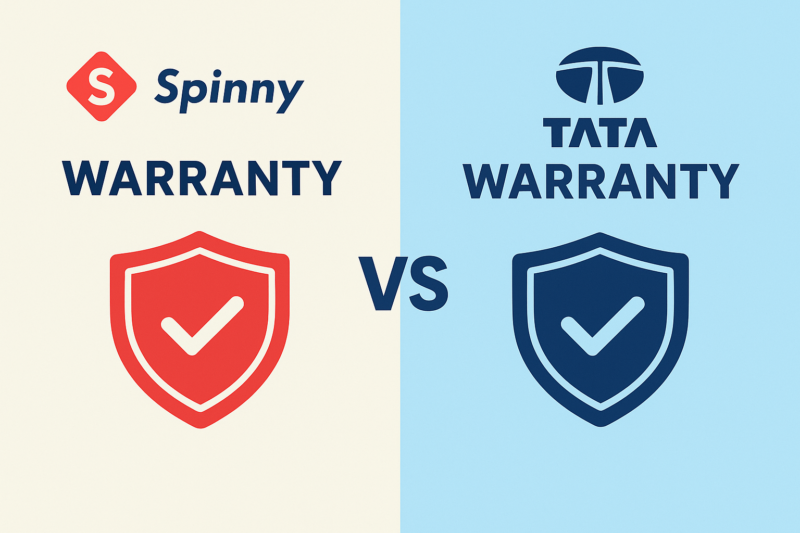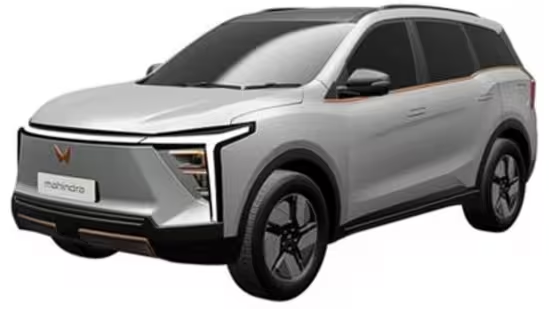When buying a new or used car, one tends to focus on design, colour, features, and specs. The Vehicle Identification number (VIN) is an equally important factor, whose importance must not be overlooked. Every car in the world has a 17-digit VIN number stamped into the chassis, which acts as the vehicle’s unique identification code.
Your vehicle’s engine VIN number is a crucial identifier for you, your insurance provider, and your mechanic. From helping the Police track stolen cars to giving crucial information, the VIN serves many purposes. Together with the engine number, you can learn details about the engine type, original products, and also the vehicle’s ownership history.
What is a Vehicle Identification Number (VIN)?
A VIN is used as the identifying code or fingerprint for a certain automobile. It acts as the car’s DNA, meaning no two vehicles running on the roads will have the same VIN. It consists of 17 characters, a mix of capital letters and digits that become a unique identifier.
To put it into a nutshell, the VIN provides information regarding the manufacturer, features, and specifications. It can be used to know more about registrations and warranty claims. You can even find out if there have been recalls or if the vehicle has been reported as stolen, along with insurance claims.
Verifying VIN numbers is important. This is why you must double-check to ensure you have the correct VIN. If the VIN is less than 17 characters, it is likely to be from a vehicle manufactured before 1981.
What is an Engine Number?
Even though it is sometimes referred to as engine VIN, the term “Engine Number” is different from VIN, as it is used to identify specific engine characteristics. It consists of a distinct alphanumeric code that is necessary for legal and administrative purposes, like vehicle registration and insurance. You can even find out more about the authenticity of a vehicle when buying a used car.
Why Are VIN and Engine Numbers Important?
Here are the significant reasons why VIN and engine number are important:
VIN Number
You must know if the vehicle in question has been reported as stolen or sustained any damages in accidents. This is all the more crucial for those who buy used cars in private sales. The VIN number can’t be changed under any circumstances, so you can be 100% positive of the information being correct.
If you notice that the VIN on the vehicle doesn’t match the one on the registration document, it is an indication that something doesn’t add up. Manufacturers use the VIN to recall vehicles as well. It usually happens if there is an issue with a certain model or component. Even for those purchasing a new car, VIN lets you know which year the vehicle was manufactured and its location, along with other specs and features.
Engine Number
The Engine Number is equally vital as the VIN. Engines might have been replaced with a more reasonable one that doesn’t have a matching Engine Number. It ensures car owners, repair technicians, and authorities can track the engine’s specifications, origin, and history.
During car maintenance inspections, this number can be used to identify the motor, which ensures accuracy when it comes to documents. It helps prevent vehicle theft and identity fraud, too. Buyers can use the data to cross-reference the number with official documents to ensure they are actually purchasing a legitimately represented vehicle.
How to Find the VIN on Your Car?
The Engine Number encodes certain details like the engine’s manufacturing plant, features, production date, etc. With this data available at your fingertips, it helps access the engine history, track recalls, and find out more about the components.
Hood and Boot
- Get into the trunk compartment by raising the trunk lid.
- Examine the area around the spare tyre by removing the pad or cover.
- This reveals the space where the spare tyre is kept.
- Find the VIN by searching the area around the spare tyre for a label or stamped number.
Dashboard
- From the driver’s side, stand outside the vehicle and peer through the windshield.
- Typically, the VIN is located in the lowest area where the dashboard and windshield meet.
- From the outside of the vehicle, the VIN is ought to be easily readable.
Engine Bay
- Pull the hood release lever, which is often found behind the dashboard, to open the car’s hood.
- Find the firewall, which is a metal wall between the vehicle’s interior and engine area.
- There you will find a metal plate that has the VIN imprinted on it.
Driver’s Door Frame
- Open the driver’s door completely while standing next to it.
- Check the door jamb (the vertical frame section upon which the door closes) for a white sticker or metal plate.
- This sticker usually has the VIN printed or stamped on it.
Front Grille
- Locate the grille, which is usually located in the front centre of your car, by standing in front of it.
- Lift the hood after releasing the hood latch, which is often located beneath the dashboard.
- Search for a metal plate or an engraved region just beneath the grille area, which is frequently behind it.
- A metal plate beneath or surrounding the front grille may have the VIN carved or stamped on it.
How to Check Your Car’s Engine Number?
Following are some places you can look for the car’s engine number:
- Hood: Check the engine block after lifting the hood. You will find it stamped on a flat surface. It could be near the cylinder head or transmission or even on the front side.
- VIN Plate/Sticker: Inspect the VIN Plate/Sticker under the hood. The Engine Number is often engraved right beside the VIN (affixed to the firewall).
Decoding the VIN: Understanding What It Reveals
Every VIN is made up of 17 characters, with each digit or alphabet representing specific information. Here is an example of a VIN number and what it reveals:
1HGCM12345A654321
- First Three Numbers (1HG): The first character (one digit, a couple of alphabets, or a mix of both) tells you about the location where the vehicle is manufactured. The second character states the manufacturer, while the third tells the vehicle type or division.
- Digits Four Through Eight (CM123): Numbers from fourth to seventh show the brand, model, body type, engine type, engine size, and fuel type. The eighth one indicates the vehicle’s engine type.
- Ninth Number (4): It is the manufacturer’s security code or the month the vehicle was produced.
- Tenth Number (5): It indicates the vehicle’s year of manufacture.
- Eleventh Number (A): It represents the car model’s manufacturing facility.
- Last Six Numbers (654321): They make up the unique production number (also known as serial number), which is a key aspect of vehicle identification.
Where to Find the VIN and Engine Number in Vehicle Documents?
Apart from inspecting the vehicle itself, there are other ways to checking car Engine Number and VIN:
- Visit the Car Dealership: Go to the dealership from where you purchased the vehicle. They can easily find out the VIN and Engine Number, along with any other details you require regarding vehicle history, repairs, etc.
- Check the Registration Certificate: All vehicles have to be registered at the local Regional Transport Office (RTO). You are issued a Registration Certificate that includes VIN and Engine Number.
- Look at the Insurance Policy Document: Needless to say, your vehicle will be insured, so you can look up the VIN and Engine Number on the insurance policy.
Checking VIN and Engine Number for Used Cars
Here is how you check the VIN and engine number for second-hand or used cars:
VIN
In order to obtain a vehicle history record or to apply for auto insurance, you will need the VIN number of your vehicle. Free VIN checks are available online from a variety of websites. VIN check services are available on websites such as Droom, CarWale, and ClearVin.
Engine Number
Visit the VAHAN website to know vehicle details. The site is simple to navigate – select “Know Your Vehicle Details” from the menu, provide the vehicle registration number, enter the CAPTCHA, and go ahead with your search. But the complete Engine Number and VIN isn’t displayed in order to protect owner privacy.
How to Use VIN for Vehicle History Reports?
The VIN of your car can be used to access its past owners, present mileage, recalls, and so on. It provides a complete history of the car, including any mentions of accidents and insurance claims. You can even find out if the vehicle has been involved in any legal disputes, such as fraud and identity theft.
Using the free VIN lookup tools mentioned above, you can quickly access accident and service records, along with data such as the vehicle’s make, model, year, and manufacturer. There are VIN decoder apps too, which offer an insight into vehicle history.
Common Issues with VIN and Engine Numbers
Here is a list of the most common issues associated with engine VIN numbers that may create confusion:
VIN
- VINs will never have the letters I, O, or Q. They are deliberately avoided to ensure there is no confusion with the numbers 0 and 1.
- Vehicles manufactured in 1981 or later will always have 17 characters.
- Anything less than that 17 characters, is an indication of foul play. Get in touch with the proper authorities and seek legal help if needed.
- There could be typos in the title, which can deem a VIN invalid. A new title has to be issued, so contact the car manufacturer right away.
Engine Number
- In some cases, the car’s Engine Number could be damaged or unclear. Please visit your RTO and fill out an application so the number can be re-engraved.
How to Verify VIN and Engine Numbers with Authorities?
Verifying VIN number guarantees the vehicle’s legitimacy and legal status. It also provides a thorough history of the vehicle, including past ownership, accident reports, and any reported thefts. Here is how you can verify VIN and engine numbers with authorities:
- You can request a proper verification where a government official thoroughly checks the car to ensure the VIN and Engine Number is genuine, visible, and complete.
- Free VIN checks are yet another way to determine if the VIN is authentic. Rest assured, the websites will provide detailed information.
- Some auto insurance companies might offer VIN checks for free.
- You can seek help from the local police department. It comes in handy for vehicles registered in another state.
Summary
Whether buying a new or used car, both necessitates knowing a VIN number. When you trade in your car, you will undoubtedly need it to identify a particular car. Similar to a fingerprint, the VIN number is specific to your vehicle.
Make sure you write down both the VIN and Engine Number, and keep it safe. If you ever need to verify or look up information related to your vehicle, such as repair history, all you have to do is look up the numbers online, and everything is available immediately.
FAQ’s
Q. Why is a VIN and Engine Number Check important?
Checking these numbers is an accurate method to verify the vehicle’s history, which includes mentions of thefts, accidents, identify frauds, etc., along with past owners and maintenance records.
Q. Can you safely provide VIN and Engine Number to others?
Since this data is only used to track vehicle history, recalls, and other specifics, you can safely share it with others (useful while selling cars). It isn’t personally identifiable information that can compromise security.
Q. How to find the VIN of your vehicle?
The VIN can be located on the side door pillar and dashboard, under the hood, boot, and front grille, and around the engine bay. It can be found on the insurance documents and registration certificate as well.
Q. How is the Engine Number used?
If you wish to find out service information that includes repairs, replacements, and maintenance, you require the Engine Number. It is paired with the VIN so manufacturers can identify vehicles for recalls or service campaigns.
Q. Are VIN and Engine Numbers the same?
No they are different, as the VIN contains 17 characters, while the Engine Number usually contains between 11 and 17 digits.




